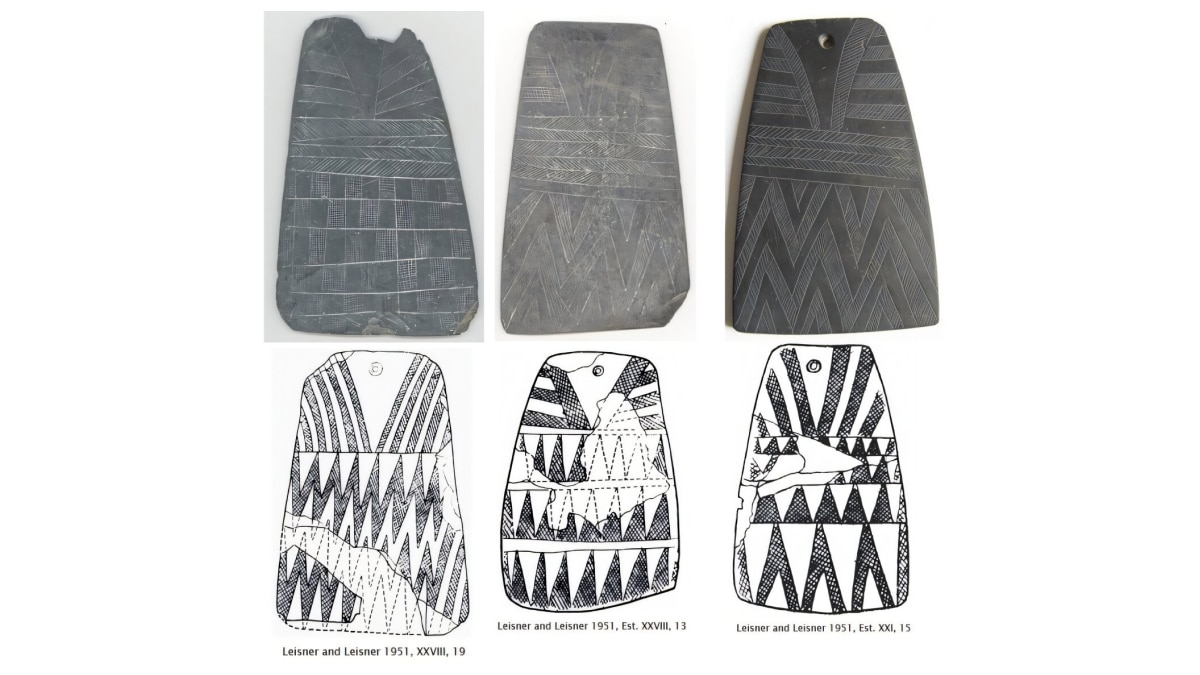A new study proposes that engraved slate plaques from the Late Neolithic and Copper Age Iberian Peninsula (3200–2200 BC) might have served as non-verbal genealogical records. The research, led by Prof. Katina Lillios of the University of Iowa, suggests these plaques, discovered in tombs across Portugal and Spain, could denote ancestral lineage. The findings are based on a detailed statistical analysis of 657 plaques, their designs and burial contexts.
Historical Theories Behind the Plaques
The study was published in the European Journal of Archaeology. Since their discovery in the 19th century, these hand-sized slate plaques, engraved with intricate geometric patterns, were reported to have sparked numerous interpretations. Early theories suggested they were emblems, amulets, or religious artefacts. Another popular hypothesis linked the designs to Mother Goddess worship, but limited depictions of facial features on the plaques—only 4% show 'eyes' or 'noses'—challenges this idea. An alternate theory, positing the plaques as children's drawings of owls, was dismissed due to the absence of distinctive owl traits like beaks and their infrequent occurrence.
Genealogical Interpretation Gaining Ground
Prof. Lillios in a statement said that the plaques functioned as genealogical records emerged from a unique two-sided plaque at the Museu Geológico in Lisbon. One side displayed an apparent error in the number of horizontal lines, while the other showed a corrected version. This observation indicated a deliberate recording system rather than purely aesthetic engraving.
As per sources, the researchers propose that the geometric motifs and horizontal registers may signify clan affiliations and generational distances from a founding ancestor. Statistical correlations showed that as communities moved further from Alentejo—believed to be the plaques' origin—register counts increased, possibly reflecting generational progression.
Indicators of Elite Usage
Reportedly, the study also found that plaques were primarily associated with larger, more elaborate tombs, suggesting they were reserved for elites. According to the researchers, these artefacts could have played a role in managing property, marriage alliances, or burial rights within influential families. Prof. Lillios, in a statement, emphasized the need for undisturbed archaeological sites to further validate these interpretations, particularly through archaeogenetic studies, although the lack of well-preserved skeletal remains poses a challenge.
For the latest tech news and reviews, follow Gadgets 360 on X, Facebook, WhatsApp, threads and Google NewsFor the latest videos on gadgets and tech, subscribe to our YouTube channelIf you want to know everything about top influencers, follow our in-house Who'sThat360 on Instagram and YouTube,

SpaceX Falcon 9 Successfully Deploys 24 Starlink Satellites
One UI 7 Beta Said to Roll Out on December 5; Galaxy S24 Series Said to Get Priority Access



